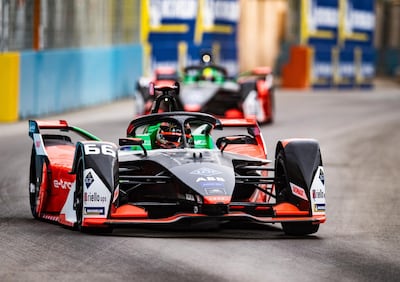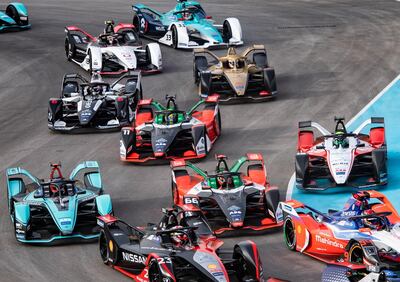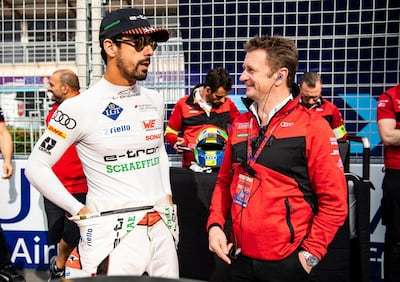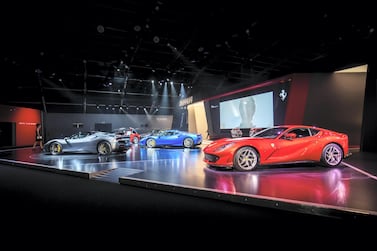Welcome to the new frontier of Formula E, where motor racing breeds the development of the electric cars we’ll be driving in the near future.
Just as Formula One and traditional motor racing began the advancement of disc brakes, turbocharging and paddle shift transmissions, which are all commonplace in today's cars, Formula E is a fast-paced mobile laboratory progressing electric vehicle technology in road cars.
Although the opening round of the FIA Formula E Championship, held in Saudi Arabia's Diriyah last month, marked the start of Formula E's sixth season, it has only kicked into high gear in the past three years as manufacturers jumped on board to legitimise the championship.
With 10 manufacturers entered among the 12 teams, Formula E now has the biggest involvement from the automotive industry in a motor-racing championship – more than Formula One, the World Rally Championship or the World Endurance Championship.
Audi is a founding member of Formula E, firstly as a partner, supplying technology to customer teams since the first season in 2014, and more recently as a factory entry in its own right.
As a result, Audi was the first to market with a volume-produced, real-world luxury electric road car that was derived from Formula E know-how – the Audi e-tron Quattro, launched in Abu Dhabi last December.

“Audi is a brand that is in transition, changing from a classical automaker to a supplier of electrical mobility,” said team spokesman Daniel Schuster from Riyadh’s pit lane.
"With e-tron being in the market for 12 months and the new sportsback model, plus another two on the way, we will reach 20 new electric models by 2025 with an additional 10 plug-in hybrids. So we're talking about 30 new electrified models in the next five years and the development starts right here."
Unlike many other forms of motorsport, Formula E's way of operating is sustainability on and off the track. Teams are only allowed two motors, inverters and transmissions each for the full season, and just one chassis.
If there is a need to use a new chassis, due to a crash where it's irreparable, the team has to ask for special permission from the sport's governing body, the Federation Internationale de l'Automobile.
"It's not like Formula One or rallying where we can just wheel out another car," said former F1 driver and three-time Le Mans winner, Allan McNish.
“This rule is to keep budgets under control, to keep a manufacturer relevant to a privateer team and to keep our carbon footprint down because of the extra freight that would be needed, so it’s all the other bits that come into it as well.”

Similarly, Michelin supplies just one type of tyre, which is a high-performance road model as opposed to a special race tyre, and is used in all conditions.
Other race series generally use up to six types of handmade, race-only tyres per weekend, covering wet weather and qualifying runs with numerous sets of each. Formula E teams are allowed just two sets, though most agree they could get through the weekend using just one, and that only fit the second set as a safety precaution.
“If you want to learn about EV technology, as we’ve done for the past five years as a supplier and manufacturer in Formula E, this is the place to be,” Schuster said, adding that Formula E is enjoying a growth rate of 100 per cent per year in terms of awareness, media interest, TV and trackside visitors.
“At this track you need to recuperate a lot of energy, so even with a fully charged battery, it still only lasts for 70 per cent of the race. We have to find that extra 30 per cent during the course of the race through energy recuperation.”
This is a clear area where the road car benefits from racing, as the more energy recovery a race team can take from an event means the fewer times a road car needs to be recharged at home.
"The best example of this knowledge transfer from racing to the road that we have in the e-tron range is our brake-by-wire system, which we first tried at Le Mans but developed on a large scale in Formula E. It allows us to recuperate a lot of energy to make sure we get to the end of the race and it's now in our e-tron EV road cars," Schuster said.
“Brake-by-wire uses the same principles that apply to our race or road car, in that the more energy you recuperate, the longer you can drive, so just as our race drivers can overtake because they’ve regained energy back, road car drivers can travel further between charges.”
McNish said Formula E is now arguably the most competitive motor racing series in the world as more manufacturers begin to see the real-world benefits of being involved.
"For this season, there are several new competitors on the grid with factory efforts from Porsche and Mercedes-Benz who are both very strong wherever the race. They will be hard to beat, as will the DS Automobiles (Citroen) team and even Audi's customer team, Virgin Racing, which works very closely with the factory team," he said. "The race is a timed distance and not laps, so 45 minutes of driving plus one lap, and this is where energy management comes into play.

"The more you put back into the battery – which is good – the higher the temperatures will be – which is bad. You'll reach critical points of overheating that need to be avoided. However, we've been good in our software understanding to keep temperatures down which gives us an advantage over the full race distance," he added.
In short, this is an intense, 45-minute test session around Riyadh’s streets in place of what would normally take months of prototype testing in the desert.
With companies like Porsche and Mercedes making their Formula E debut this year, whereas the likes of Jaguar, Nissan and Audi have been long-time partners of the racing series, we can expect to see a huge growth spurt in the development of road-going EV cars as Formula E revs into its sixth season.







